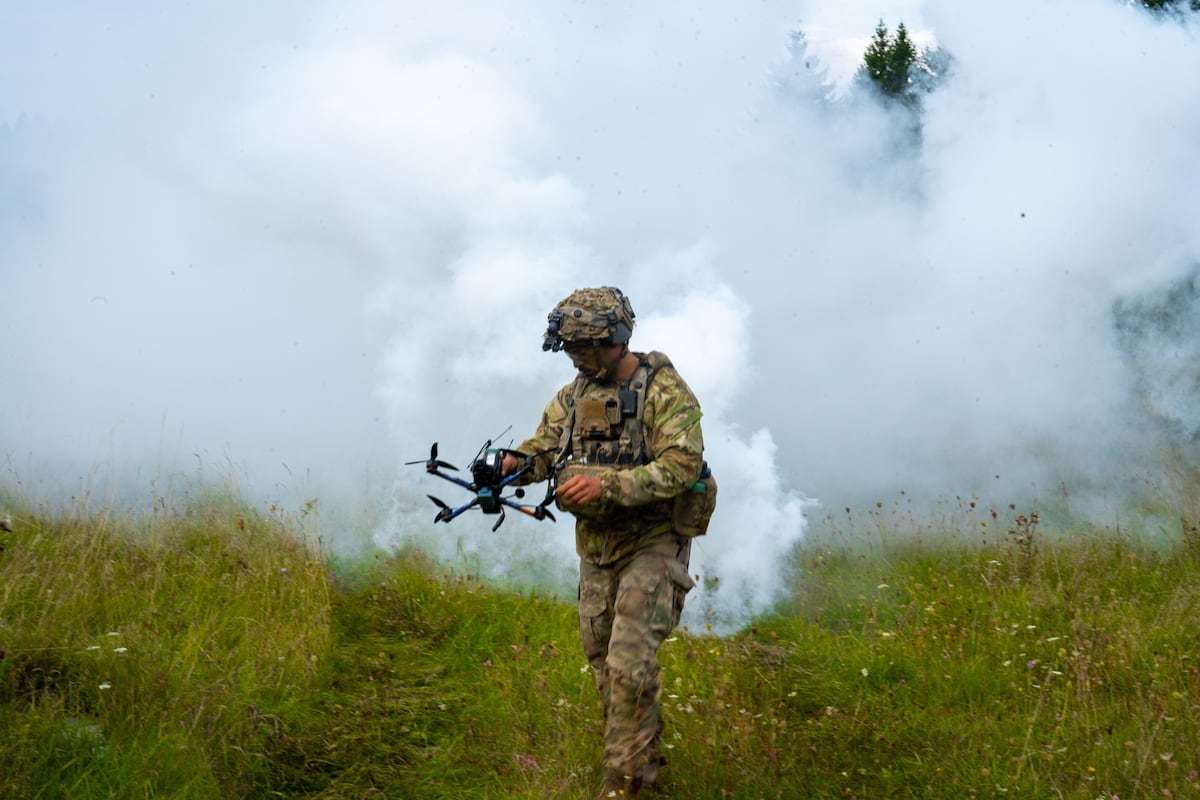Well into November, there’s no sign of the Global Posture Review expected last summer. One of the most important policy reviews of a new administration, it examines the U.S. military’s presence around the world—and what changes might be made.
It is no secret that some senior officials involved in the review would like to see a smaller U.S. military presence in Europe. Indeed, they are already taking steps to make it happen. Last month, it was announced that around 1,000 rotational U.S. troops in Romania would not be replaced once they return home. This sparked criticism on Capitol Hill and raised questions about America’s posture elsewhere in Europe, especially in the Baltic region.
The United States today keeps a robust but modest rotational presence in the three Baltic state of Lithuania, Latvia, and Estonia. America is not alone: NATO allies maintain multinational battlegroups across the Baltics—British-led in Estonia, Canadian-led in Latvia, and German-led in Lithuania—with Germany now building to a permanently based armored brigade of 5,000 troops in Lithuania by 2027.
Having this foreign presence in the Baltics makes sense for both regional and transatlantic security. The Baltic states are geographically vulnerable inside NATO—vulnerable in strictly military terms and, in a crisis, on whether the alliance has the military capability and political will to fully live up to its Article 5 security guarantees. Geography works against reinforcement: Lithuania connects to the rest of NATO only through the narrow Suwałki Gap with Poland, while the militarization of Russia’s Kaliningrad exclave and Belarusian territory complicates any rapid flow of forces by air or by sea.
This is why maintaining forces on the ground is essential to the successful defense of the Baltic states—and why removing any U.S. forces from the region, especially now amid heightened Russian aggression, would send the wrong message to both friends and foes.
Within the region, Lithuania is particularly important. The United States keeps roughly 1,000 soldiers there, with two battalions routinely deploying for nine-month tours. There are three reasons why President Trump should ensure these troops should remain there.
The first reason is geography. Lithuania’s location serves as the hinge between Northern and Eastern Europe, abutting both the Suwałki Gap and Kaliningrad—flashpoints in any major conflict scenario. In the event of a major war securing Lithuania will be key.
Secondly, Lithuania aligns with Trump’s world view on issues like energy, China, and burden sharing. Compared to its fellow EU members, Vilnius was ahead of the curve on energy security. Recognizing the importance of the energy security issue, Lithuania opened a NATO Center of Excellence for Energy Security in 2013. Lithuania’s floating LNG import terminal at Klaipėda was first proposed in 2011 and became operational in 2015. This was a major blow to dependence on Russian gas years before most Europeans started to act.
Vilnius likewise read the China challenge early. In 2019, Lithuania became the first European country to identify Beijing as a national-security threat in its official strategy documents. Two years later, it became the first EU country to withdraw from the 17+1 initiative launched by China to foster cooperation with Central and Eastern European countries. It has also welcomed Taiwan’s establishment of a representative office in Vilnius, and has been outspoken about China’s human-rights abuses in Xinjiang.
For Washington, Lithuania is a model of burden-sharing. By share of national income, it ranks among the very top supporters of Ukraine. At home, Lithuania already spends 3 percent of GDP on defense and has approved a surge past 5 percent beginning in 2026—exceeding NATO spending targets.
Finally, Lithuania has been a trustworthy and loyal partner to the United States for decades. Roughly 5,000 Lithuanian troops served in Afghanistan between 2002 and 2021, and was one of a small handful of countries that led a Provincial Reconstruction Team (in Ghor Province). And 930 Lithuanians served in Iraq, beginning in 2003, when many Western European countries refused to do so. America should be eternally grateful for this.
So it is in America’s national-security interest to keep U.S. troops in the Baltic region in general, and specifically in Lithuania. It is also a signal to other allies: if you align with U.S. interests, and invest seriously in your own defense, Washington notices.
As the Pentagon finalizes the long-awaited Global Posture Review, America’s military presence in Europe—especially in the Baltic states—should remain a central pillar of U.S. strategy and transatlantic security. Any withdrawal from the region will send the wrong message.
Luke Coffey is a senior fellow at the Hudson Institute.
Read the full article here








Leave a Reply